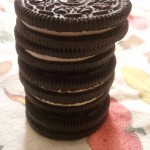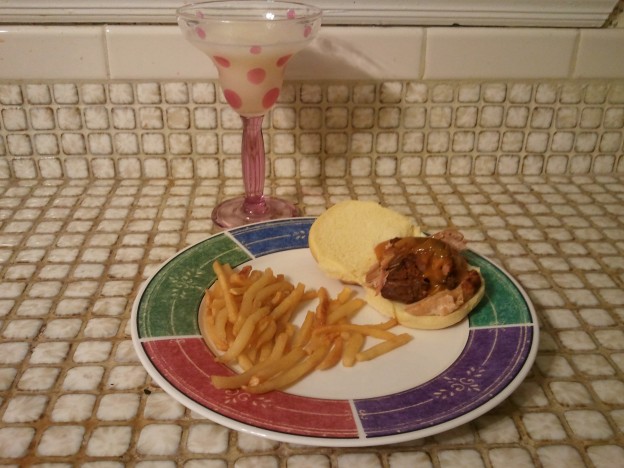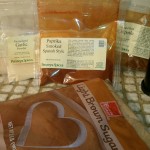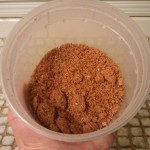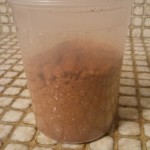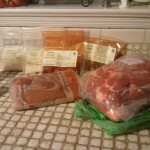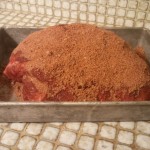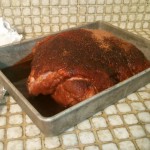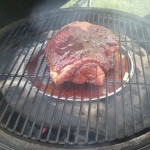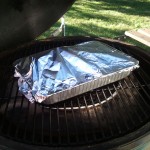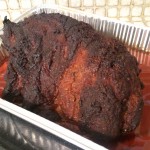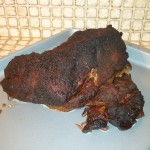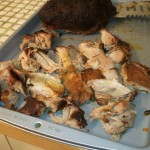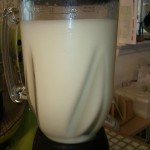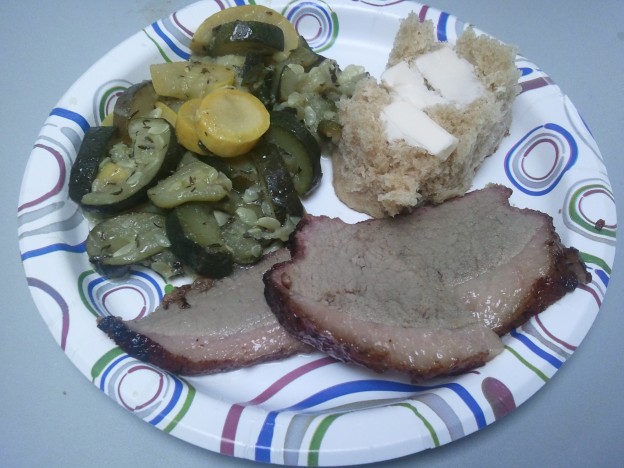My mother-in-law and her SO were in town for the Fourth. We wanted to grill something fabulous that would feed a crowd — we knew there were at least 7 of us but frequently extra people get invited or show up as the smoke wafts through the neighborhood. We’d done 5 racks of ribs and a bunch of tofu the weekend before (NO pictures of that, hence no blog post; I’m lucky I still have plates and utensils that gang was ravenous!!), so we wanted something else. Brisket is one of our go-tos for a crowd, so we thought Mom would enjoy that. Plus, there’s a certain set-it-and-forget quality to our technique.
I should probably take a moment to wax rhapsodic about our Big Green Egg. A Big Green Egg (BGE) is a outdoor cooker. I hesitate to say grill, because it’s also a smoker. We use it to smoke ribs, brisket, or pork shoulder at 225F/250F (low and slow) for hours and hours … or grill a standing rib roast, butterflied pork loin, or whole turkey at 325F/350F for a couple of hours, or pop in some oysters at 450F, or sear off some steaks at 600F+. It’s amazingly versatile and practically idiot-proof. I should be embarrassed, because any time I’m at the garden center picking up charcoal or an EGGcessory, I’m always trying to sell one to the hapless soul who happens to be browsing while I’m there. Just for the record, I whole-heartedly recommend the LARGE.
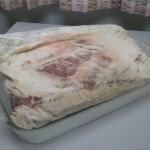
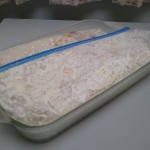
Our brisket technique starts the night before.
Put your brisket in a giant zippered bag (I have some 2.5 gallon name-brand ones from Wal-Mart). The piece pictured above was about 6.5 pounds. We have done one as large as 12 pounds (it was a HUGE zippered bag).
Pour buttermilk into the bag. I use cultured whole-milk buttermilk, since that’s what my butcher carries, but low-fat should be fine. You want to put in enough that the whole piece is covered and there some sloshing about, but not so much that the bag overflows. Smaller briskets will take less than a quart (leaving some leftover for biscuits or a sweet bread). That monster one we did — I think it took almost two quarts.
Dump in some kosher salt (a couple of teaspoons probably), fresh ground pepper, garlic (fresh, granulated, powdered — whatever), dried rosemary, dried thyme, maybe some smoked paprika. Put the brisket in the fridge to marinate overnight.
The next morning, you’ll want to get your grill going. We use an electric starter to fire up the lump charcoal (and ONLY lump charcoal … lighter fluid is blasphemy around a BGE) and then set up the grill for indirect grilling with a plate setter. We pull the meat from the marinade, shake off the excess, and put the meat on. Shut the lid and begin the clock-watching. We know, from experience, that this size will take about 6 hours (the 12 pounder took about 9 hours). DISCARD the marinade!
Around the four or five hour mark, we take a peek inside. We’re looking for good brown caramelization, a bunch of fat rendering, and some shrinkage. Around this time we pull the brisket off, wrap it well in aluminum foil, and then PUT BACK ON the grill, still set up for indirect. We let it finish cooking the remaining hour or two wrapped in foil.
Why? Well, at this point, you probably aren’t getting any more smoke flavor into the meat. Whatever smoke ring and coloring you are gonna get, you done got. Also, this is about the time the internal temperature tends to plateau. Wrapping will hold in that heat and get the internal temperature rising again. Finally, the foil holds in the still-to-be-rendered fat and helps the meat to steam and stay moist for the last bit of cooking. You sacrifice some exterior “crustiness” but it’s worth it.
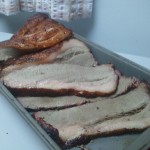
You know it’s done when you put in a thermometer and it feels like butter. Seriously, somewhere around 195F. Pull the wrapped meat and put on a cookie sheet (it’s pretty drippy) to rest for at least 20 minutes. We like to slice with an electric knife or get our friend Steve to do it with his fancy electric slicing machine.
After we pulled the meat, my husband pulled off the grate, pulled off the ceramic plate setter, put the plate setter out of reach of the dog, put the grate back on, and got the temp up around 400F. We then threw a dozen ears of corn, still fully husked, on the grill. Shut the lid and let them go about 5 or so minutes. Lift the lid, flip them and rotate (there’s always a hot spot), then shut the lid for another 5 or so minutes. You are trying to get good grill marks on the husk (’cause it looks fancy) and a little smoke into the corn, but pretty much just heating it up and letting it steam in its own husk.
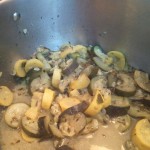
Earlier, in the (relative) cool of the morning, I cooked off some summer squash. I think I had four zucchinis and two yellow crooknecks. Slice ’em kinda chunky, throw in a pot with a couple tablespoons of butter, a pinch of salt, and maybe some dried thyme. Bring to a bit of simmer, cover, and let steam until soft but not mush. They reheated nicely later in the day.
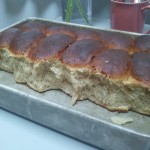
The day before, I had baked off some honey-wheat rolls from ATK/Cook’s Country. These are AMAZING, and surprisingly have more whole wheat flour than white flour, so I feel kinda virtuous making them. I really don’t buy much bread — I tend to make it — so these are a nice addition to my repertoire.
Our guests brought pie and ice cream. No pictures of those, but I will confess to eating raspberry pie for breakfast on Saturday.
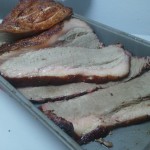
Another gratuitous beefcake meat shot.
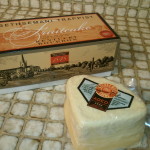

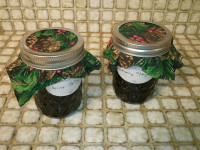
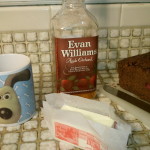
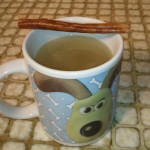
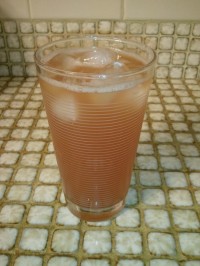
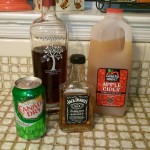



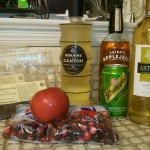
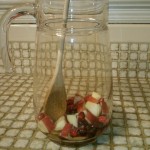




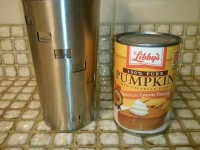
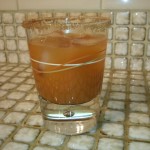
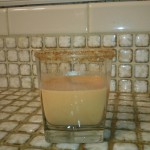
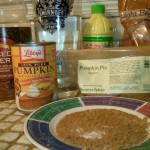
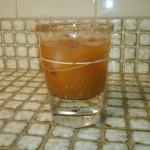
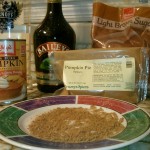
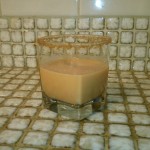
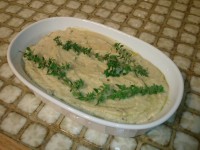
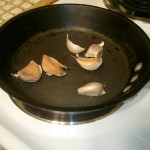
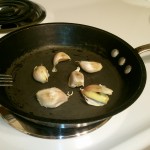
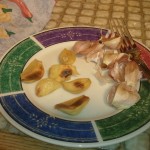
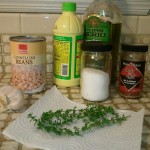
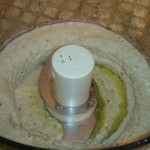
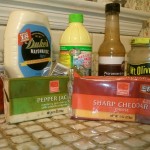
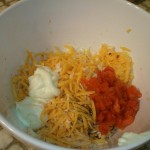
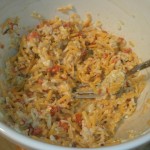
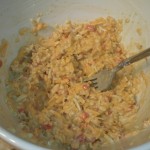
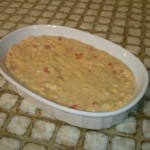
![[photo: Casey Tantum]](https://www.michellematlack.com/blog/wp-content/uploads/2013/07/oreo-2.jpg)
